Christopher Nolan’s Oppenheimer (2023): A Film Review
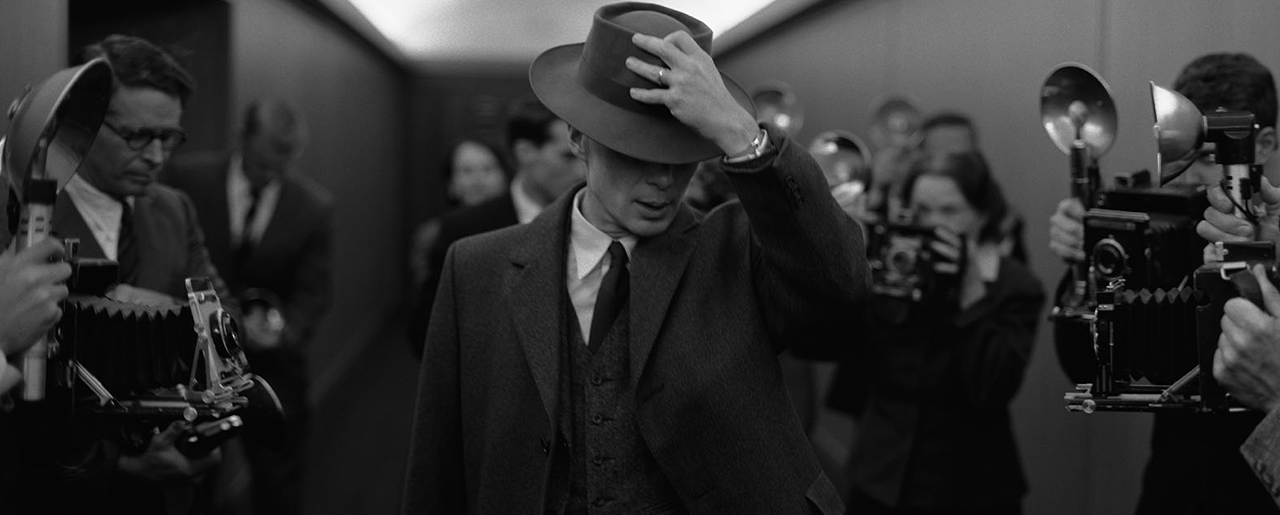
Image courtesy of Universal
"Robert Oppenheimer was an enigma,” Kai Bird and Martin J. Sherwin tell us in American Prometheus: The Triumph and Tragedy of J. Robert Oppenheimer (London: Atlantic Books, 2005). The book is the account of Oppenheimer’s life and works on which Christopher Nolan’s latest film, Oppenheimer, a biopic of the physicist who gave us the terror of the atomic bomb, is based.
Oppenheimer’s life was one lived, as Bird and Sherwin recount, as “a theoretical physicist who displayed the charismatic qualities of a great leader, an aesthete who cultivated ambiguities,” and yet he was at once also, in the years since those first bombs exploded in Japan and continuing decades beyond his death, a person “shrouded in controversy, myth, and mystery.” He was “a symbol,” fellow physicist Hideki Yukawa, Japan’s first Nobel Prize winner said, of the “tragedy of the modern nuclear scientist.”
Nolan’s masterful film is not an enigma, thankfully, even if Oppenheimer was. It is instead a beautiful virtuosic piece of dramatic cinema capturing all of this and more about the man, his work, his professional and personal relationships, and his legacy, and with all the seriousness and characteristic flare of a Nolan film project that should appeal to virtually any viewer regardless of interests. I, being scientifically minded since early childhood and especially regarding physics, found the film positively riveting – all 3 hours of it. I recommend it heartily, like many other reviewers giving it universal acclaim, and for a variety of reasons, most of them surely relevant to us all.
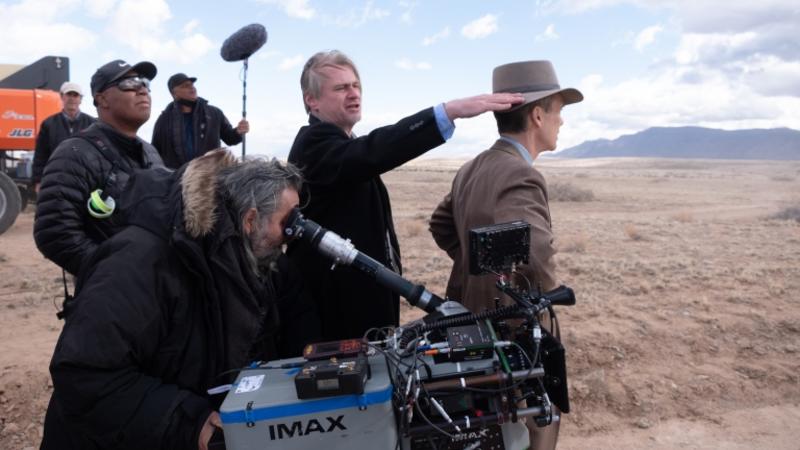
Christopher Nolan has made his name and reputation with a long list of widely lauded works since his debut, Following, which was a 1998, 1 hour and 9 minute black and white mystery thriller made for less than half a million pounds, of which most reading this will not have heard.
That aside, even the semi-regular filmgoer will know most of Nolan’s works as producer, director, or both, such a popular impact have they had. His best known projects to date include Memento (2000), Insomnia (2002), Batman Begins (2005), The Prestige (2006), The Dark Knight (2008)—for which Heath Ledger won a well-deserved posthumous Oscar portraying Batman’s nemesis the Joker—Inception (2010), The Dark Knight Rises (2012), Interstellar (2014), Dunkirk (2017), Tenet (2020), and now Oppenheimer (2023). He has acted as producer on other films like Man of Steel (2013 – who knew?), Batman vs Superman: Dawn of Justice (2016), Justice League (2017), and Zach Snyder’s Justice League (2021), his connection to these latter projects as producer or executive producer barely recognized. Nolan’s giftedness for the film art form is such that he has also written many of these for the screen, including Oppenheimer, this newest creation penned in collaboration with Oppenheimer’s biographers Bird and Sherwin.
Nolan has even invented equipment, should he envision a new way of doing something, of wresting from the creative processes something that he wants to make happen. He crafted a special lens for The Dark Knight, for instance, so revolutionary that fellow filmmakers J. J. Abrams and Zach Snyder begged him to borrow it for their work.
For Oppenheimer, continuing this pioneering trend, Nolan had Kodak create a new and special type of black and white film to fit his preferred 70mm IMAX format. Throughout the course of the story, his direction dances between black and white and colour segments to help us follow the storylines from various points of view. The effect is so striking, the black and white so immaculate in Nolan’s format, that others will again want to use this technology so effective in the telling of Oppenheimer.
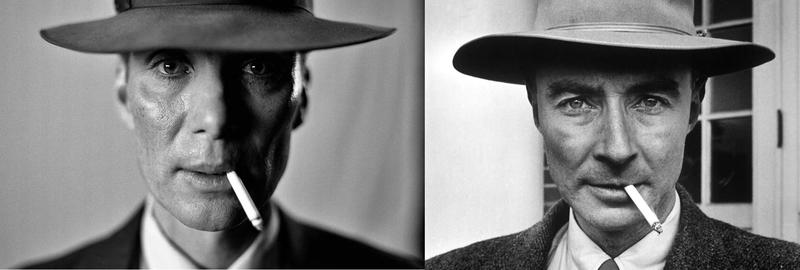
And what storytelling it is, and with what notable acting talent to help Nolan tell it. Cillian Murphy, who has acted for Nolan in the Batman trilogy and most recently Dunkirk, plays Oppenheimer. Murphy captures the attested complexities of the man well, including his tortured pathos as relayed in Bird and Sherwin’s book and by numerous personal reports. Such pathos was embedded in Oppenheimer’s complicated psyche long before he helped to create the bomb and realised what terrible powers of destruction he had helped to accomplish and unleash. When Murphy utters Oppenheimer’s famous quotation from Vishnu in the Bhagavad-Gita, ‘Now I am become death, the destroyer of worlds,’ we sense the scientist’s bizarre mix of elation and shock at the achievement, seeing it on the actor’s gaunt and haunted face. Murphy reportedly starved himself, routinely avoiding meals with his fellow actors on the set to become the pained Oppenheimer incarnate. Oppenheimer was always by common account a quite tortured soul, and this grew to palpable levels following the bombings of Hiroshima and Nagasaki. He felt, and in many ways literally was, personally responsible for making such destruction possible, which he quickly realised could literally end the world entirely, should people act irresponsibly with the then newfound fire from the gods. Some have called the film a work of horror so replete is this aspect throughout it, and so vividly portrayed.
Oppenheimer’s tremendous sense of guilt and angst was shared by at least some others drafted in to work on the assignment, like the eventual fellow Nobel laureate Richard Feynman. Feynman temporarily stopped his Princeton PhD in physics to help with the so-called Manhattan Project based at the secret laboratory at Los Alamos, New Mexico (1943–45), where he was the youngest group leader in the theoretical division. Feynman agreed to join because he realised that if Americans were attempting to produce such a dreadful weapon, others like the Nazis must be trying to do the same; and they were. Decades later, on an episode of the BBC’s Horizon programme dedicated to the by then famous Feynman, which I have also watched for this review (‘The Pleasure of Finding Things Out’, 23 November 1981), he admitted that the achievement of the bomb pushed him into a dark depression such that he balked even at seeing simple construction projects like bridges being built around his hometown, New York City. “I had a very strong reaction after the war, of a peculiar nature,” Feynman recounted. “I remember thinking that things were … sort of doomed, because already it appeared to me, earlier than to others who were more optimistic, that international relations and the way people were behaving was no different than it had ever been before. And I was sure it [the atomic bomb] was therefore going to be used very soon … and I thought, really believed, that it was senseless to make anything because it would all be destroyed very soon anyway.”
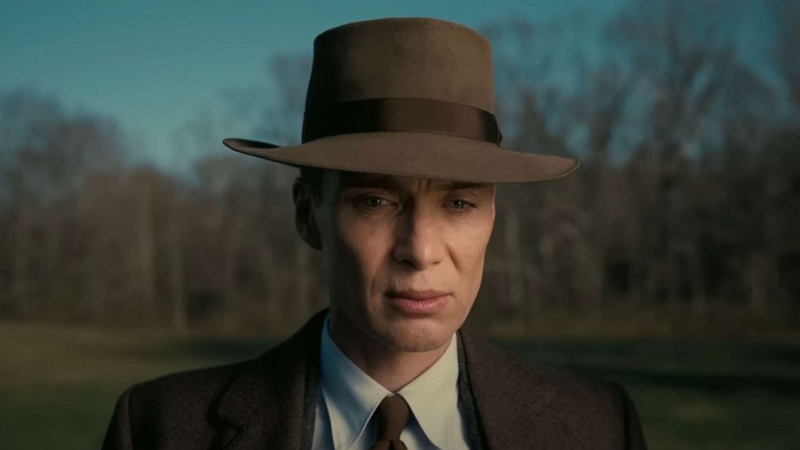
As the film depicts, it was in fact not actually known with certainty whether the explosion of even a single nuclear weapon at the level of clandestine development and testing might set off a nuclear chain reaction that could keep going and destroy the planet. There is a fleeting humorous moment offsetting the otherwise unceasingly intense film as the characters consider this unthinkable possible scenario. Murphy’s Oppenheimer admits to Matt Damon’s General Leslie Groves, who was ultimately in charge of the military project, the prospect:
Leslie Groves: “Are you saying that there's a chance that when we push that button... we destroy the world?”
J. Robert Oppenheimer: “The chances are near zero... “
Leslie Groves: “Near zero?”
J. Robert Oppenheimer: “What do you want from theory alone?”
Leslie Groves: “Zero would be nice!”
In truth, Oppenheimer’s reassuring ‘near zero’ was a stretch of faith, as some physicists on the Los Alamos site were actively taking bets over whether this would actually happen.
Flanking the instantly recognizable Murphy and Damon playing Oppenheimer and Groves, the cast of characters played by quite a long list of additionally familiar actors reads like a who’s who of the quantum physics revolution. Granted, perhaps one does have to be a physics geek like me to find the 180-minute extravaganza as exciting as I did. Yet there were hardly any great physicists of the 20th century, of whom most educated people will have heard whether scientifically-inclined or not, who were not portrayed: Murphy as Oppenheimer, Kenneth Branagh as Niels Bohr (of Copenhagen interpretation fame), James D'Arcy as Oppenheimer’s Cambridge professor Patrick Blackett (whom Oppenheimer hated so much he left on his desk a deadly poisoned apple hoping to kill him, before later retrieving it in a panic), Tom Conti as Albert Einstein, Matthias Schweighöfer as Werner Heisenberg, Jack Quaid as Feynman and, gloriously, really too many other important scientists and acclaimed actors to name here. Other actors portraying key people in the nucleus of Oppenheimer’s personal life include Emily Blunt as his equally brilliant wife Kitty, and Oxford’s own Florence Pugh—whose father owns several restaurants in town—playing Oppenheimer’s suicidal lover, Jean Tatlock. I have no question but that some of these people will be nominated for awards following this film, and really should win them.
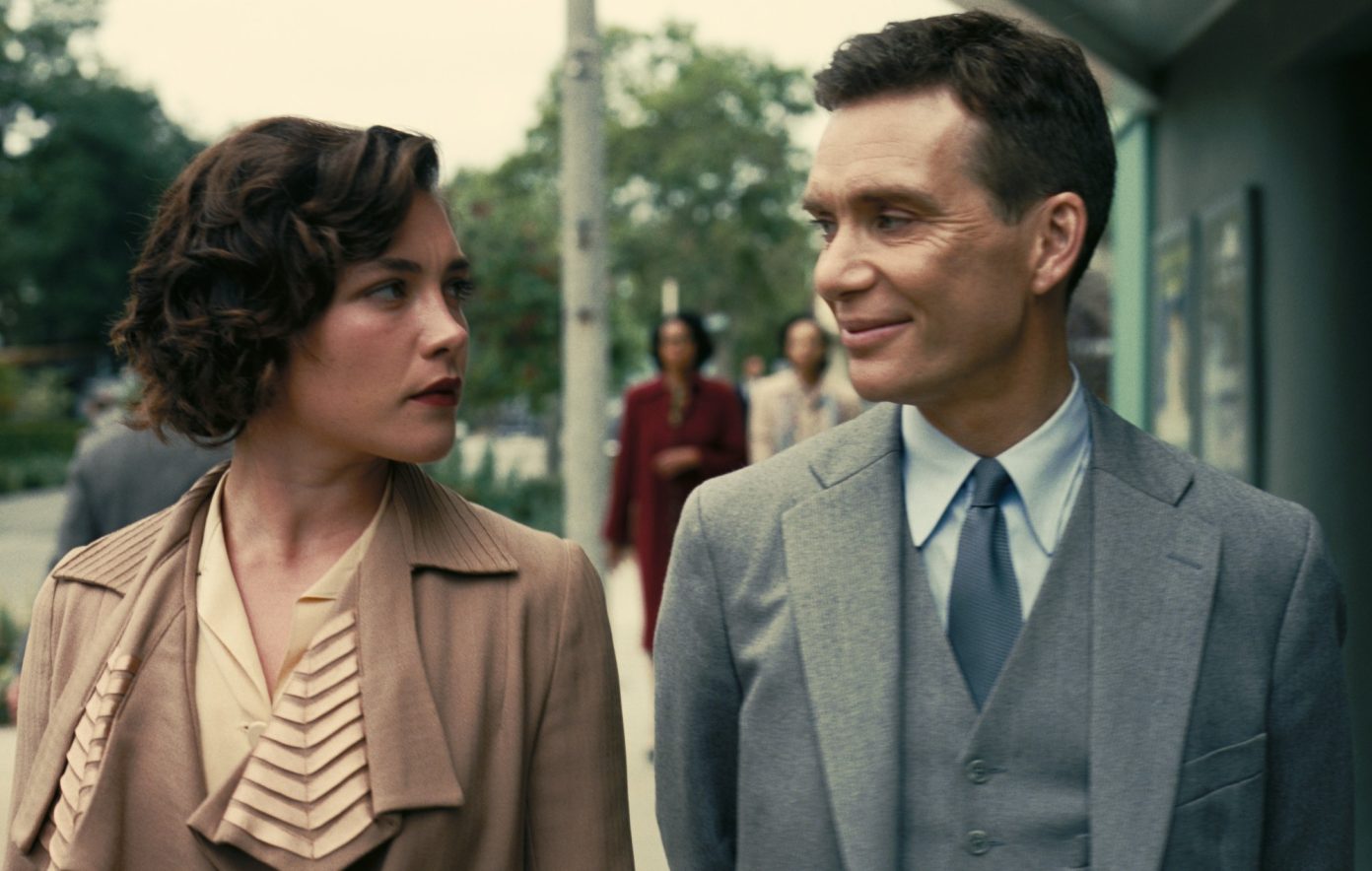
Credit: Universal Pictures
I have noted why I saw the film – I teach and publish on areas like quantum mechanics in the light of philosophy and religion, and simply love the subject area, which is as much pleasure as work to me. I take physics and related books on holiday to read by remote Italian swimming pools. But why should you bother, all of the above thus far aside? There are at least three reasons applicable to all.
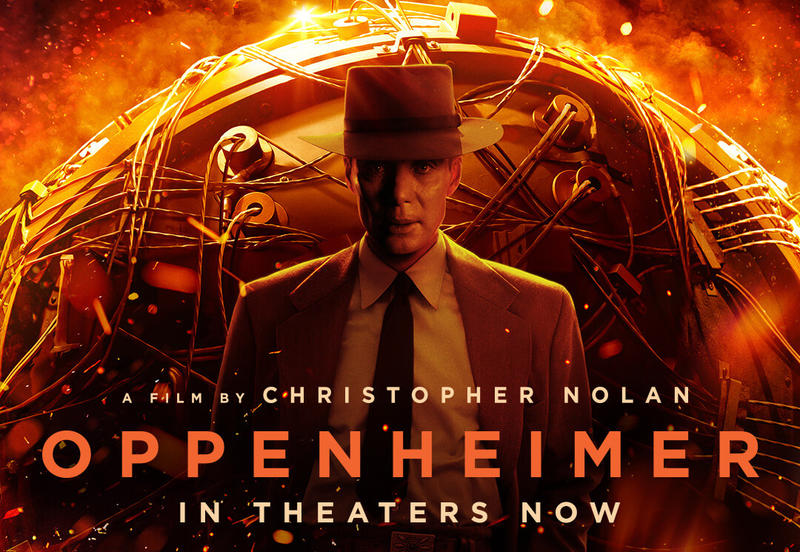
First, Oppenheimer depicts the making of human history that will have impacted everyone.
Have you not heard Vladimir Putin in recent months in the news threatening to use tactical nuclear weapons against Ukraine? Oppenheimer and his colleagues made this possible. Forget global warming for a second, before certainly remembering it again. The practically immediate destruction of the entire planet is possible, and humanity has had enough nuclear weapons to do so many times over long since 1945. By the early 2020s there now exist an estimated 13,410 nuclear weapons in the world, which is a figure lower than at a peak of 70,000 at the height of the Cold War of the mid-1980s. The Federation of American Scientists records that more than 90 percent of the totality of nuclear weapons is owned by only two countries, the United States and Russia. The remainder are held ready to use, if necessary, by France, China, the United Kingdom, Israel, Pakistan, India, and North Korea, with countries like Iran attempting to build their own.
The film will teach you something about science and its real-world impact that you may not have otherwise known.
I am still buzzing from the scene where someone bursts into Oppenheimer’s classroom in 1938, a year before Hitler invaded Poland, to inform everyone present that a small team of German scientists had somehow managed to split a uranium atom. Oppenheimer at first thought this impossible, before eventually designing weapons based on such a truthful reality. Such nuclear fission (the act or process of splitting the nucleus of an atom to release a large amount of energy) is today also a useful source of energy, and nuclear fusion (the act or process of combining the nuclei of atoms to form a heavier nucleus to release a large amount of energy) shows promise, if made viable, of being the greatest energy revolution ever conceived.
Following these reasons, the film can have important implications for theology, philosophy, and religion broadly.
Did you know that the first bomb was dropped on Hiroshima on the Christian feast day of The Transfiguration of our Lord, held on 6 August annually worldwide? There must be something to say about that apparent perversion, one event described by eyewitnesses as a deadly light brighter than the sun, and the other when Jesus’s disciples say that they witnessed his transfiguration while praying on a mountain. ‘And he was transfigured before them, and his face shone like the sun, and his clothes became dazzling white’ (Matthew 17.2). Oppenheimer himself named the atomic testing site ‘Trinity’, though he claimed not to remember why later. Ethical questions have no end when people can so destroy themselves and others, needless to say. And broader religious studies questions are brought to bear by Oppenheimer’s personal fascination with Hinduism. He taught himself Sanskrit and read the Bhagavad-Gita in it, hence quoting Vishnu upon realising the weight of building the first atomic weapons. He considered ‘The Lord’s Song’ from the ancient text ‘the most beautiful philosophical song existing in any known tongue’, and gave copies of the Gita as gifts to friends.
The film is far from warmongering, should anyone worry. The central theme is arguably the life-long horror that men like Oppenheimer, and his friend Feynman, felt upon realising what they had done. Oppenheimer so repented of it that he spent the rest of his life campaigning against the use of atomic weapons, and so much so that he was put on trial as a suspected Communist by his own fellow Americans.
While I won’t ruin it for you, the ending of the film is haunting and affecting along these lines.
Is Nolan’s Oppenheimer a work of genius as some say? It is doubtless a mature display of great artistic and technical skill. Nolan can make not so great films after all, like Tenet, which has the same panache, but does a terrible job of explaining the physics at its heart. For a Nolan masterpiece comparable to Oppenheimer see Interstellar if you have not yet. I’ve watched that at least a dozen times to date.
And by all means do see Oppenheimer – all 3 hours of it. Also, do read the book by Bird and Sherwin on which it is heavily based – and all 721 pages of that as I did for this review, partly because I found the subject matter as fascinating as the film.
I want to see Oppenheimer again.
Dr. Shaun Henson is a Departmental Lecturer in Science and Religion at the Faculty of Theology and Religion.


